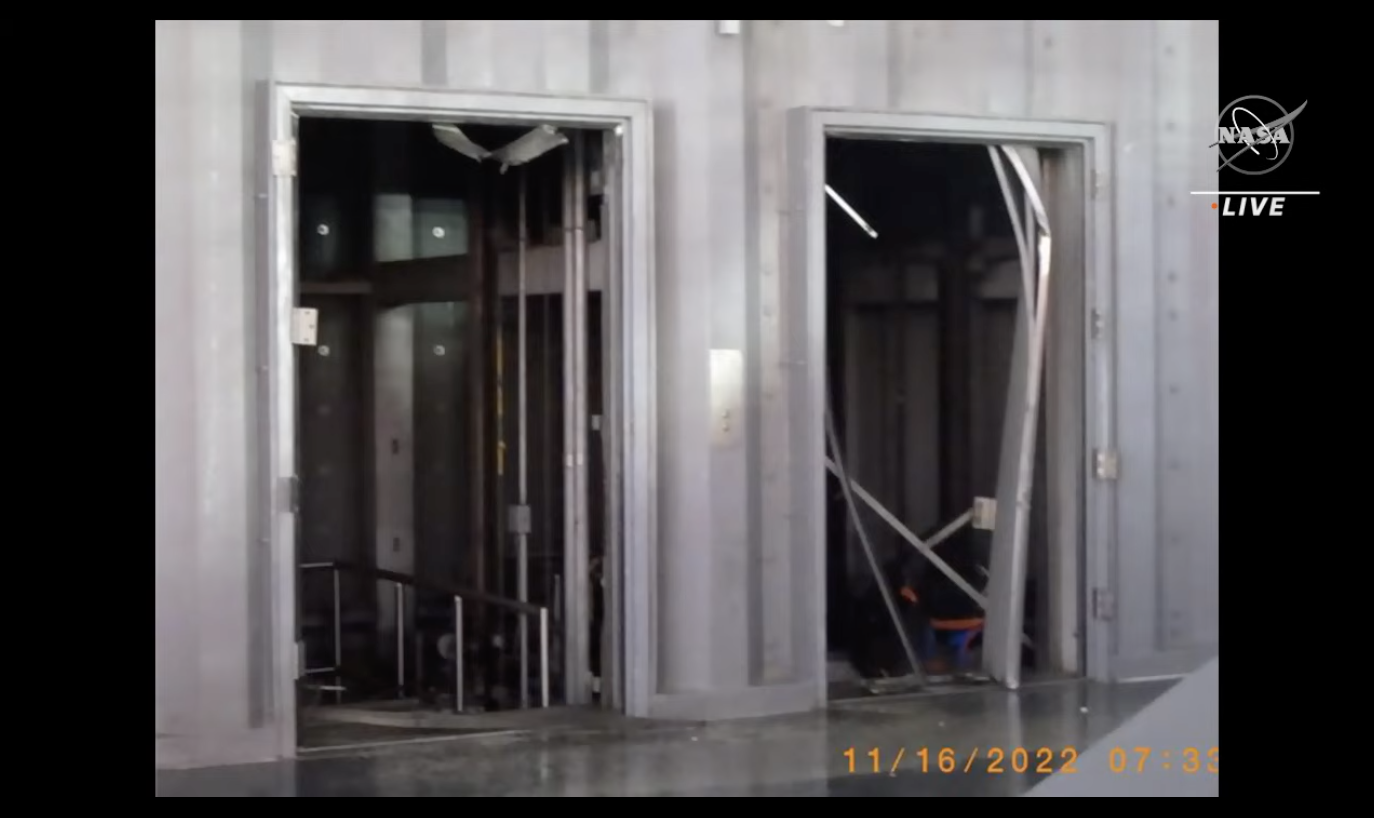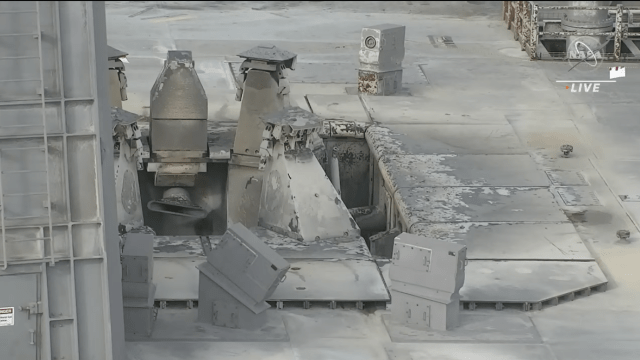A scorched platform, fried cameras, broken pipes, and a busted elevator are among the casualties of last week’s launch of NASA’s SLS rocket. Mobile Launcher 1 and Launch Complex 39B at Kennedy Space Centre will require repairs, but NASA says they’ll be ready for the next Artemis mission.
Space Launch System, or SLS, blasted off during the early hours of Wednesday, November 16, sending the Orion capsule on a 25.5-day journey to the Moon and back. It was a picture-perfect launch, and NASA has said as much. Preliminary data from the Artemis 1 flight indicates that SLS performed as well as or even exceeded expectations, Mike Sarafin, Artemis 1 mission manager, told reporters yesterday.
SLS’s performance deviations were less than 0.3% across the board, and the rocket missed NASA’s target orbital insertion by just 3 nautical miles, according to Sarafin. He reminded reporters that SLS exerted 8.8 million pounds of thrust at liftoff, and the fact that SLS deviated by 2.13 m each second is still “remarkable” in terms of precision. “The results were eye-watering,” he added.

Photojournalists at Kennedy Space Centre have been told to not take photos of Launch Complex 39B for security reasons (i.e., ITAR restrictions; NASA says photos of the now-exposed umbilical plates would represent a security violation), and possibly because NASA doesn’t want to promote the fact that its launch tower was damaged.
During a press briefing on Friday, Sarafin admitted that the mobile launch tower did incur some damage as a result of the launch, which produced temperatures in excess of 3,000 degrees Fahrenheit. “We expected to find damage at the pad, and we are finding damage at the pad,” Sarafin said.

At a press briefing held yesterday, the mission management team offered further details and some visuals that detailed the scope of the damage. In addition to new scorch marks on the tower and missing paint on its deck, a number of pad cameras got burned, and some nitrogen and helium supply lines incurred minor damage. Sarafin said blast doors on the tower’s elevators were torn away by the rocket’s shock wave, so “right now the elevators are inoperable and we need to get those back into service.” All said, the damage “that we did see pertains to really, just a couple of areas,” he said, adding that SLS is largely a “very clean system.”
At the same time, the deluge system “did a great job” and the tail mast service umbilicals were “clean inside,” Sarafin explained. He added that repairs are required, but he’s confident everything will be ready for the crewed Artemis 2 mission in 2024. That might seem like plenty of time, but stacking operations for the sequel mission will likely need to start next year.
The mission management team seemed largely unfazed, and it’s entirely possible that the damage is indeed minimal or at least manageable. It might also be true that NASA is doing its best to downplay any damage induced by its new pride-and-joy. Opinions posted to Twitter varied, with some saying the damage is much worse than NASA is willing to admit, with others saying the damage isn’t a big deal and it’s all part of the engineering process. Indeed, surprises should be expected when launching the world’s most powerful rocket, but if the damage is worse than NASA is leading us to believe, then they should admit it.
Back at the lunar ranch, the uncrewed Orion capsule continues to do its thing. The spacecraft performed a close flyby of the Moon yesterday as it steadily works its way into a distant retrograde orbit around the Moon. Orion will conclude its 25.5-day mission on November 11, when it attempts an atmospheric reentry at Earth and a splashdown in the Pacific Ocean. Artemis 1 is the first of what NASA hopes will be a series of missions to establish a permanent human presence in the lunar environment.
More: What’s Next for the Orion Spacecraft as It Cruises Toward the Moon
